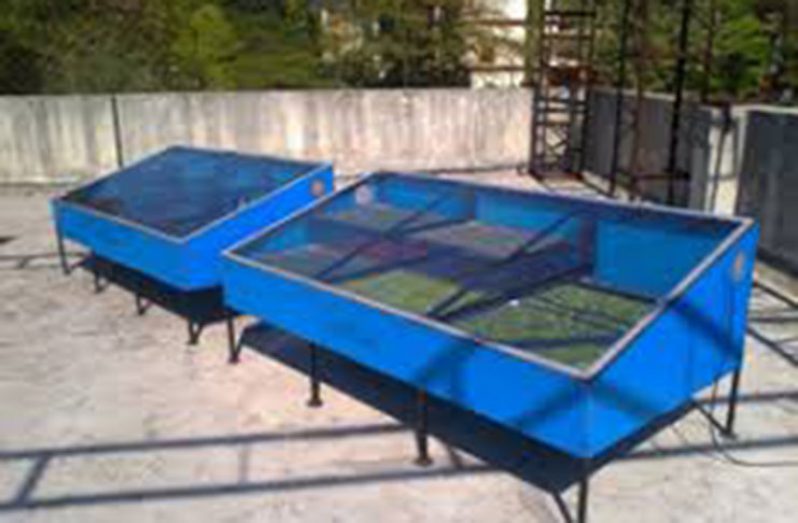
LAST week NAREI in Focus explained to readers what is solar drying; and the advantages and benefits of using this technology. As a recap, solar drying is a low-cost drying method that is used for preservation, quality improvement and processing purposes. It removes moisture from both organic and inorganic materials restricting the growth of microorganisms and thereby restricting food spoilage.
This week NAREI in Focus will look at some solar dryers.
Open sun drying is one of the oldest methods used for drying food products. This technique exposes the food materials to sunlight by spreading it inland or on exposed surfaces. Moisture from the food products will be removed by the solar radiation. Even though this method has been in use for a long time, it has some disadvantages like dust contamination and insect and bird attacks among others.
However, advancements in technology have offered hygienic solutions for these disadvantages. One technique is by drying foods in a closed chamber and supplying hot air to the drying chamber. The required air is heated either using fossil fuels or by electric heaters which will directly add up to the climatic problems happening in our planet.
There are many different types of solar dryers but they can all be conveniently classified into three distinct categories depending on the mode of heat transfer from the sun to the product. This has led to the following definitions.
In a direct mode solar dryer, the crop is directly exposed to solar radiation. For this to occur, the structure containing the crop must be covered with a transparent material. The solar radiation passes through the glazing and is absorbed by the crop and its immediate surroundings. Most of the solar radiation is converted into heat, thus raising the temperature of the crop and its surroundings.
The direct absorption of solar radiation by the crop is the most effective way of converting solar radiation into useful heat for drying. The final dried quality of some crops is also enhanced by direct exposure to solar radiation.
The indirect mode solar dryer does not fully expose the crop to solar radiation. The incident solar radiation is absorbed by some other surface – usually a solar collector – where it is converted into heat. The air for drying flows over this absorber and is heated. The warmed air is then used to transfer the heat to the crop located within an opaque structure.
High and controllable temperatures can be achieved in this type of dryer if a fan is used to move the air through the solar collector. The main disadvantages of an indirect mode solar dryer are the additional cost and complexity involved in construction. Like direct mode dryers, the capacity can range from a few kilograms to several metric tons.
In some instances, a solar dryer uses a combination of direct and indirect modes known as a mixed mode solar dryer. In this type of solar dryer, the crop temperature is raised by both direct absorption of solar radiation and heat transferred from another solar absorber. While mixed mode solar dryers probably have superior performance to direct or indirect mode solar dryers, in practice the additional cost and complexity of these systems tend to make them uneconomical and less popular in practice than the other two modes of dryers.



.jpg)








